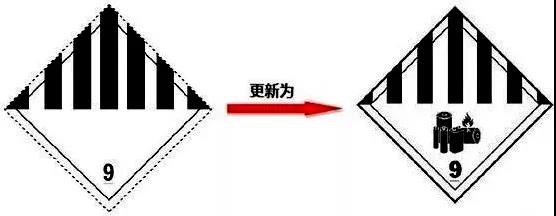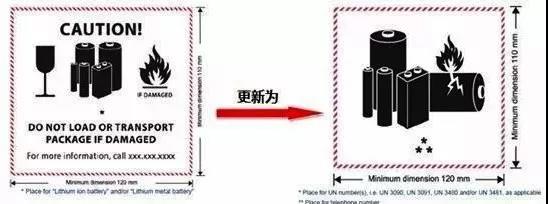The new edition of the IATA DGR manual has been officially released! The new version of the DGR manual is version 60.
In order to facilitate new and old customers to arrange freight plans in a timely manner, from now on, we accept the 2019 version of the transport certificate of replacement application.
The arrangements are as follows:
ZOCT new air transport certification standards and replacement plan:
1, the air transport certification implementation standard changed to DGR 60 version
2, the maritime certification implementation standard remains unchanged, still IMDG(Amdt. 38-16) 2016 edition
Application for replacement of Air Shipping Certification has been launched since November 15, 2018
4, 2019 Air Shipping Certification original issued from December 1, 2018
Extended reading:
The 60 version of DGR's regulations for lithium batteries and the main related updates of packaging are interpreted:
1. 3.9.2.6 Add new articles(f) and(g). (f) The articles provide for batteries containing both disposable lithium metal cores and rechargeable lithium ion cores. (g) The provisions require battery manufacturers and secondary distributors to provide a test summary of UN 38.3, starting with 2020.01.01.
The new special provision A213, which complies with 3.9.2.6.1(f) for lithium batteries containing both lithium metal cores and lithium ion cores, shall be assigned to UN 3090 or UN 3091, as appropriate. When such batteries are transported according to Part II of packing instructions 968,969 or 970, the total lithium content of all lithium metal cores in the battery must not exceed 1.5 g and the total capacity of the total lithium ion cores in the battery must not exceed 10 Wh.
Related interpretations:
Batteries that contain both disposable lithium metal cores and rechargeable lithium ion cores finally have their own identity confirmation, regardless of whether they are transported by lithium ion batteries or lithium metal batteries. However, since there are two types of cores, the threshold for Class II transport must be raised accordingly.
When purchasing batteries in 2019, do not forget to ask the manufacturer or distributor for a test summary of UN 38.3! It's due to go live in a year!

2. The new special provisions A214, A214 integrates the relevant classification guidelines and requirements for vehicles and is specifically divided into two UN entries:
UN 3166 Entry for transportation by internal combustion engine or fuel cell for flammable liquids or gases. (These entries include hybrid cars with both internal combustion engines and wet batteries, sodium batteries or lithium metal or lithium ion batteries, which are installed in batteries during transportation. ))
UN 3171 Applicable only to the transport of vehicles powered by wet, sodium or lithium batteries and of equipment powered by wet or sodium batteries. (This special provision is intended for vehicles designed to carry one or more persons or goods. Self-powered devices that are not manned or transported are classified as equipment and equipment containing lithium batteries is classified as UN 3091 or UN 3481)
Related interpretations:
In short: the means of transport is what carries the cargo, otherwise it is the equipment. It is UN 3166 that burns oil and UN 3171 that burns nothing.
3. PI 966, PI 969 revised the regulations on the number of spare batteries and changed the original two to two sets. For example, if the battery required for the device is a A battery + B battery, the maximum number of spare batteries is 2 A batteries + 2 B batteries.
Related interpretations:
Need more spare battery equipment after the convenience, do not need to ship the spare battery to develop the goods.
4. 2019.01.01 The new lithium battery operation tag and the ninth type tag must be used initially. The old label is invalid.
Related interpretations:
As shown in the figure below, 2019.12.01 is implemented

